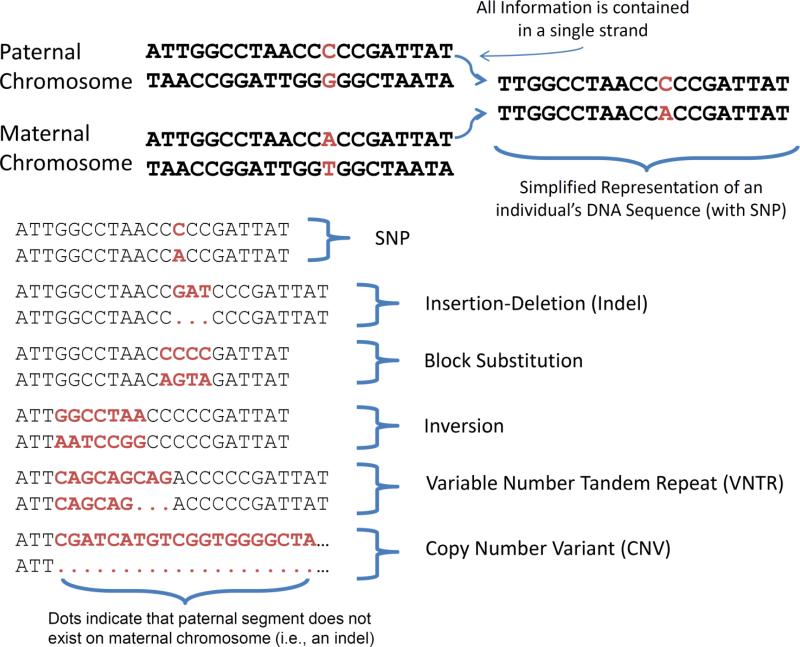Figure 1.
Common Forms of DNA Variation. Humans have two chromosomes, one inherited from their father (paternal) and one from their mother (maternal). Since the same bases always pair together in a single chromosomal strand (A with T; C with G), giving both pairs for each strand is redundant, and DNA sequences are therefore represented by two rows of bases (the “Simplified Representation” in the figure). The “CA” SNP represents the only difference between the maternal and paternal autosomal segments. Catalogued in this figure is the Single Nucleotide Polymorphism (SNP) as well as several common types of structural variation, including Indels, Block Substitutions, inversions, VNTRs, and CNVs. Note that these particular variants are illustrative, and that variation is not necessarily within-person. For example, this individual is heterozygous for the SNP, but other individuals may be homozygous CC or homozygous AA. The same is true for structural variants. In the Indel example, this individual has a GAT insertion on the paternal chromosome and no such insertion on the maternal chromosome. Another individual may have GAT insertions on both chromosomes; yet another individual may lack the GAT insertion altogether.

